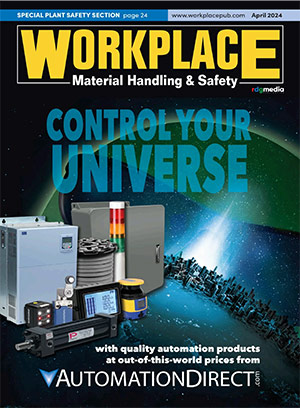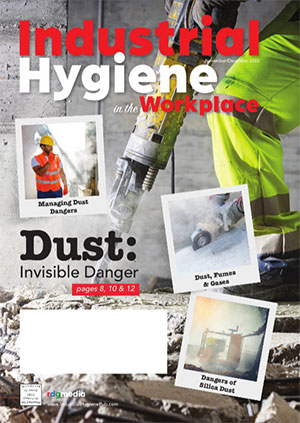Improving a Construction Site, One Safety Measure at a Time
Dr. Kevan Orvitz, Founder & President of MEGAComfort
They say, “time is money,” and this can be taken quite literally in the construction industry. The constant pressure that crews and project managers face to meet deadlines, all while staying in budget, often cause safety to fall to the wayside once boots hit the ground. As it is such a dangerous profession, employers need to concentrate on mitigating hazards for their construction workers. Workers also need to keep in mind that they are responsible for taking precautions when working under hazardous conditions, as well.
Construction industry leaders must strive to guard their employees—not just to protect their budgets, but for the moral obligation they have to keep employees’ safe. Here are ways and tools businesses can implement to reduce workplace accidents and promote construction site safety.
Lead by Example
OHSA’s Safety and Health Regulations for Construction: OSHA 29 CFR 1926 serves as a baseline for safety requirements. Construction managers must reinforce these regulations and go above and beyond, by continuously leading by example and making protection a priority, even before breaking ground.
By setting clear expectations from the very beginning, managers can set the tone to ensure workers understand their own personal responsibility for their safety, as well as the safety of those around them. As a manager, it’s important to “walk the walk” when it comes to workplace health and wellness. This helps everyone work together towards the common goal of completing a job, injury-free.
Pro tip: An informal safety talk at the start of each work day can make mangers’ jobs easier by improving workers’ understanding of expectations; preventing wasted time on inconsistencies; and minimizing the chances for errors. Kicking off each morning with these discussions helps spark valuable dialogue on general safety and information about tools, equipment, materials and processes. Doing so allows for a better understanding on protection, on all levels.
Train for Protection
Many of the common construction hazards seen today can be identified and avoided if proper training has been provided by management. Aside from the obvious need of keeping workers safe, a secure workplace will reduce overall construction costs. For example, proper training courses that happen annually, or even quarterly, can help reduce insured losses, administrative penalties, fines and litigation, as well as costly attorney fees.
Regardless of delays or looming deadlines, safety training should never be viewed as a disposable or secondary task. It is critical that every employee, even seasoned veterans, attend safety meetings and trainings on a regular basis. Regular meetings that keep proper protocol on employees’ minds can be beneficial. Managers and supervisors need to invest the time in providing relevant, useful instruction and guidance. By making safety a priority, contractors can significantly reduce worksite injuries and deaths.
Personal Protection Equipment
Although Personal Protection Equipment (PPE) is valuable, there are a few tips and tricks on finding the right type of PPE, based on their features. Here are a few key items to look for when choosing PPE:
Safety toe overshoes: when working on a construction site, having protective footwear is imperative, as there are greater risks involved than stubbing one’s toes.
- Ensure employees are comfortable wearing safety toe overshoes by selecting ones with composite toe caps, which are 25% lighter than steel.
- Composite toe overshoes are great options for temporary protection where there is risk of toe damage or where toe protection is required. Composite toe overshoes protect workers from stepping on something sharp and reduce the risk of damage due to crushing or falling objects.
- Offer composite toe overshoes to all managers, inspectors and plant visitors to ensure everyone who visits the construction site is protected from falling or sharp objects on the ground.
Insoles: Anti-fatigue insoles represent a unique and cost-effective way for workers to ensure their feet have enough support and comfort to get them through the day.
- Spending long hours standing, moving heavy equipment and doing repetitive movement all day can be extremely taxing physically.
- Anti-fatigue Insoles made from 100% dual-layer memory foam have been shown to reduce pain and fatigue, which may boost energy and productivity.
- Dual-layer memory foam insoles have direct contact with the body and may help reduce muscle strain, improve balance reactions and increase blood circulation.
- Anti-fatigue insoles with unique qualities, such as puncture resistance, can further ensure worker safety, protecting from nails and other sharp objects while still promoting comfort and support.
- Hardhats: when choosing the right hardhats to get the job done, there are a few things to keep top of mind:
- Comfortable fit: The more comfortable, the more likely it will stay on a worker’s head. Consider looking for hats that have ample webbing built into the suspension and some sort of padding to offer maximum support.
- Made from lighter, newer materials: composite materials, and even Acrylonitrile Butadiene Styrene (ABS) plastics, are durable enough to exceed impact requirements, yet they offer the added benefit of being lightweight.
- Adjustable and personalized fit: the number one factor to user acceptance is comfort. The less it fits, the more time it will spend off one’s head and in the locker or on the workbench. The hardhat you decide on should always allow for personalization—adjusting the size and position for optimum comfort and performance.
- Accessory ready: Many hardhats include accessory slots that can be used for those needed accessories. Selecting hardhats that are accessory ready are crucial as many users are required to include face or hearing protection while on the job.
- Eyewear: Just like hardhats, eyewear comes in many types; here are a few key indicators to look for when choosing eyewear protection:
- Fog-resistant glasses: perfect for workers that require protective eyewear on the job. Fogging occurs often due to changing temperatures, humidity and lack of air flow caused by tight-fitting eyewear. Even in cold weather, the temperature difference between a worker’s sweating body and the frigid outdoor air can produce condensation and eventually cause fogging—impeding their sight and impacting their well-being.
- Comfort: just like hardhats, if eyewear isn’t comfortable, it won’t be used—the role of comfort in eye protection cannot be underestimated. Comfort-enhancing features include cushioned brows, comfortable gel nosepieces or padded nose bridges, vented frames, flexible or ratcheted temples, and lenses with adjustable angles.
Organized Jobsite
Many people don’t realize that unorganized jobsites are costly. Not only should a jobsite be clean and organized; it should be efficient as well. Sometimes, it’s as simple as stacking material on one side of the workspace to another, which can make a difference. A few things to look for when planning out the job-site:
- Access: are all areas easily accessible, can things be moved around to help the flow of work?
- Do areas look ready: is it acceptable for workers, are there uneven areas in the ground that need to be addressed?
- Material staging: is the material in the best, most efficient spot for the workers to access?
- Equipment: do we have all the necessary equipment; are we missing anything; are there items that need to be replaced?
- Workers: are there too many people or not enough people in one working area at a time?
While organization may be broad, anything from on-site logistics to the paperwork plays a huge role in how employees operate. It only takes a few minutes of preparation to ensure each jobsite is secure for employees to get the job done.
Thoughtfully implementing each of these strategies will help prevent downtime, chances of injury and improve overall safety—from head to toe—on a construction site. It’s the responsibility of the company to lead by example and ensure employees are given the proper training, equipment and oversight to remain efficient and injury-free on the job. WMHS



